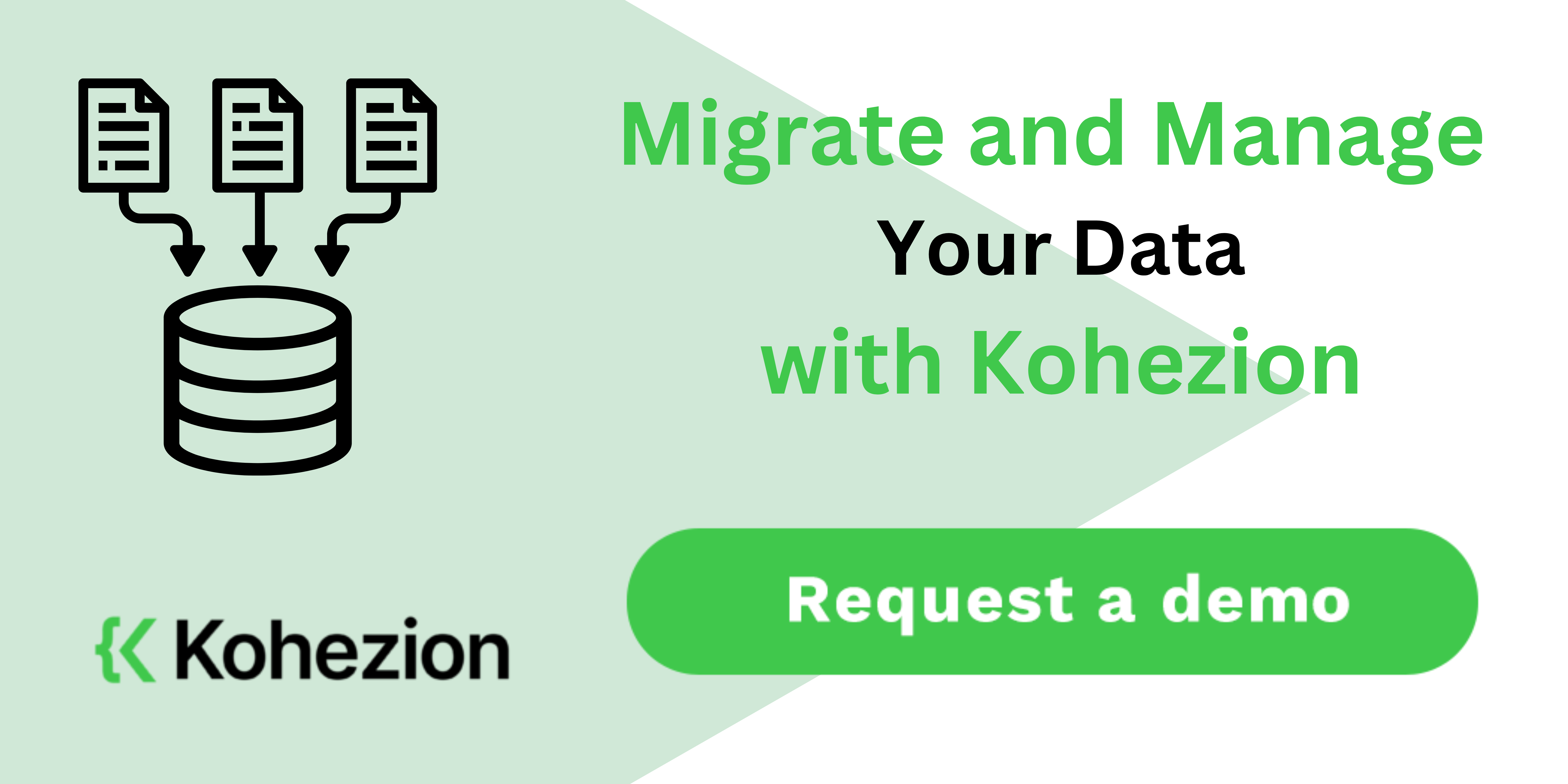What is Sharepoint?
SharePoint is a powerful platform for business collaboration and content management. It enables efficient data management and information sharing. Its purpose is to centralize resources, facilitate communication and teamwork, and enhance productivity. Employees can use SharePoint to share and store files while adhering to security guidelines and accessing resources/data via alerts or notifications.
It is a great platform for enabling enterprises, reinventing the digital workplace, and fostering all-around digital collaboration because it also offers centralized information consolidation and facilitates simplified access to resources and data. The data integrity has built-in security mechanisms and is guarded against unauthorized usage or access.
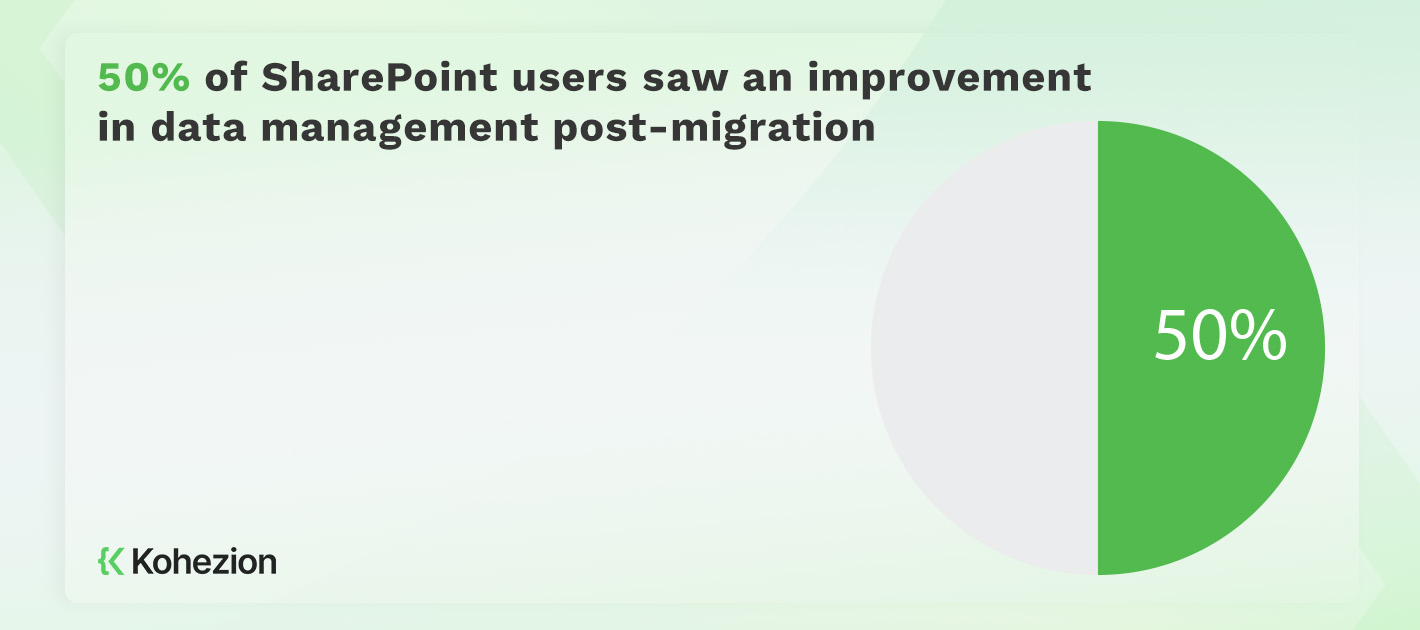
Popular Sharepoint migration services
SharePoint migration services are intended to help businesses transition from their legacy systems or upgrade to a new version, server, or functionality. These services can be tailored to reduce downtime and complexity during the migration process. There are different types of SharePoint migration services available. Let's check the most popular ones!
On-Premise migration services
As their name suggests, these migration services involve moving data from an on-premise server to a cloud-based SharePoint environment. They refer to the process of moving an organization's data, applications, and infrastructure from an on-premise environment to a cloud-based or off-premise solution.
Companies may need to hire professionals to ensure a smooth transfer because it might be a complicated procedure. Typically, it is done in order to profit from the cloud's scalability, cost-effectiveness, and enhanced flexibility. But moving to the cloud from an on-premises infrastructure can be difficult and complicated. It necessitates meticulous planning, knowledge, and a complete comprehension of the unique needs of the firm.
Office 365 cloud migration services
Data transfer from one Office 365 tenancy to another is required. It entails transferring data and apps from on-premises infrastructure to the Office 365 platform in the cloud.
Although this kind of migration may be simpler, it still needs to be carefully planned to prevent data loss or corruption. Microsoft's Office 365 is a collection of cloud-based productivity tools and services that includes well-known programs including Word, Excel, PowerPoint, Outlook, and Teams.
File Server Migration Services
These services help in transferring data from the source file server to the target SharePoint location. File server migration services allow for organizations to move their data to SharePoint. This lessens the complexity and downtime of the migration procedure is one of its main advantages. It also makes sure that all the data and files are moved effectively and securely.
Assuring that all the data is moved accurately and appropriately is one of the key issues faced by file server migration services. This can be difficult, particularly when working with enormous amounts of data. Making sure that the migration procedure doesn't influence the functionality of other apps and systems within the organization is another problem. To divide the procedure into manageable steps, utilize the following subheadings:
- Assessment
- Planning
- Pre-Migration
- Migration
- Post-Migration
Sharepoint migration phases
1. Pre-migration assessment
This phase can help identify any potential migration concerns. It comes in handy when developing a migration plan to avoid risks when moving content to a new SharePoint environment. This phase involves several steps, including:
- Discovery phase - It serves to analyze business needs and current production environments.
- Assessment phase - It's used to analyze integrations to identify and fill gaps in governance or hardware requirements.
- Pilot phase - It is intended to test for functional equivalency and load test.
- Execution phase - It's used to run full and incremental migrations.
- Onboarding phase - Use it to synchronize changes made during execution.
2. Source environment identification
Understanding the present digital landscape, including data placement, access, and usage patterns, is essential. Using this information, you can build a successful migration strategy as well as new workflows and data structures. What should you consider during this phase?
Take into account the storage capacity, the growth in users, and the requirement for specialized solutions. Planning and structuring the target environment, as well as deciding which data to migrate and which to delete, are all potential areas for difficulty.
3. Migration strategy development
Developing a successful migration strategy requires a step-by-step approach. Generally speaking, there are 8 steps, such as:
- The 1st step is to study the data in the existing environment, understand where it's located, who has access, and how it's used.
- The 2nd step is to determine the storage space required and if the number of users will increase.
- The 3rd step is to review the scope and timeline for migration, discuss the migration approach, and identify potential roadblocks.
- The 4th step is to proactively inform users of what to expect before, during, and after the migration.
- The 5th step is to perform a comprehensive analysis of business needs and current farms to identify gaps and build a strategy.
- The 6th step is to perform testing for functional equivalency and load testing during the pilot phase.
- The 7th step is to run migrations based on needs and send dtatus reports to keep stakeholders aware.
- The final step is to synchronize changes and help in a smooth transition of users into the new environment.
4. Choosing and Using Sharepoint migration tools
There are several SharePoint migration tools available to assist in the different phases of SharePoint migration. The SharePoint Migration Tool (SPMT) is a tool that supports migration to SharePoint, OneDrive, and Teams from various SharePoint Server versions and SharePoint Foundation. It also supports the migration of workflows from SharePoint Server 2010 OOTB workflows, to SharePoint Designer 2010 & 2013 workflows.
Quest Solutions offers solutions for one-hop migrations in complex environments, including Migrator for Notes to SharePoint, Metalogix Essentials for Office 365, and Metalogix Content Matrix. These tools support content migration, analysis, and management strategy, and handle complex SharePoint and Office 365 migrations. However, SharePoint migrations can be complex, and each version of SharePoint carries vast differences in implementation.
5. Migration process
The migration process involves several phases, each of which must be executed in order to achieve a successful migration. They include everything from the planning and pilot process to the post-migration support and training phase. The actual migration process is where sites are migrated by collaborating with the business team or stakeholders. Make sure downtime is kept to a minimum during the migration process.
6. Post-migration review
A crucial step in the SharePoint migration process that guarantees the procedure's success is the post-migration evaluation phase. Placement of the content, security, navigation, and user adoption are the main factors to be taken into account at this phase. Reviewing SharePoint migration assessment data, recognizing any complications, and talking about objectives, timetables, and user adoption methods are all steps in the post-migration review process.
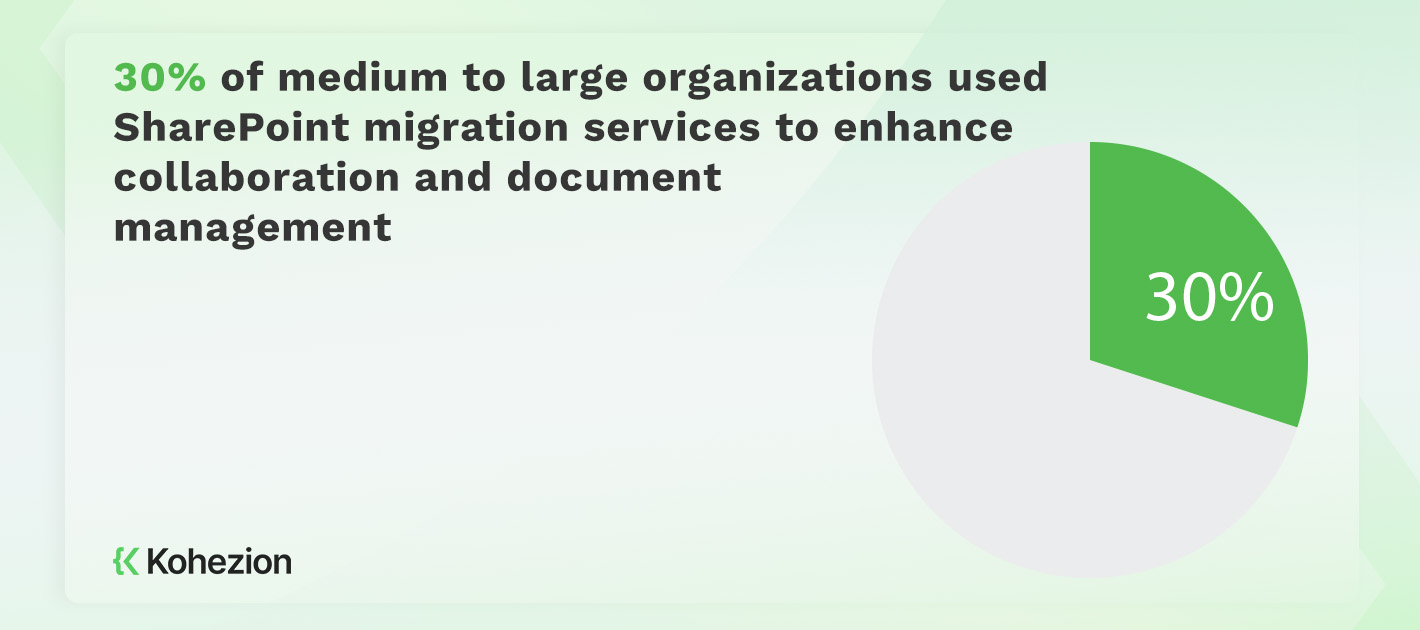
7. Destination environment setup
This phase lays the foundation for a successful migration. It involves a comprehensive analysis of business needs. Listed below are the steps involved:
- To make sure the new environment satisfies the needs of the business, the first step is to evaluate it, taking into account user permissions and data dependencies.
- The infrastructure, including storage space, tailored solutions, and procedures, must then be ready in order for the move to go off without a hitch.
- The destination environment must then be set up in accordance with the migration plan to include site collections, custom solutions, sites, branding and a logo maker, pages, list & libraries, site columns, and more.
8. User Adoption
User adoption entails teaching and informing end users about the new system's capabilities and usage. The three main components of this phase are communication, support, and training. Take into account each user's particular training requirements and offer support to deal with any challenges that may emerge. Keep the consumers updated on the migration's status and any changes that might affect them. You can also do live streams through a live transcoder to ensure user proficiency.
9. Performance enhancements
The aim is to ensure the smooth and efficient functioning of the platform. You can make several performance enhancements during each phase of the migration process.
- To determine user rights and data dependencies, a thorough examination of the present production environment is carried out during the discovery phase.
- Address any gaps in governance or hardware requirements, content, procedures, and integrations throughout the evaluation phase.
- To find places where performance can be improved during the migration process, load testing is done during the pilot phase.
- Depending on the requirements of the company, both full and incremental migrations are carried out during the execution phase.
- Users are seamlessly moved into the destination environment during the onboarding phase, which synchronizes changes made during the execution phase.
10. Ongoing support
You want the system to be functioning properly all the while. Any issues need to be resolved promptly. How do you achieve this during and after migration? Pay attention to important factors including tracking system usage, responding to user input, and giving users help and training. User mistakes, system performance problems, and data integration challenges are common problems that could occur during this period.
Also, offer clear instructions and training, as well as to have a responsive support crew that can address any issues right away, in order to resolve user errors.
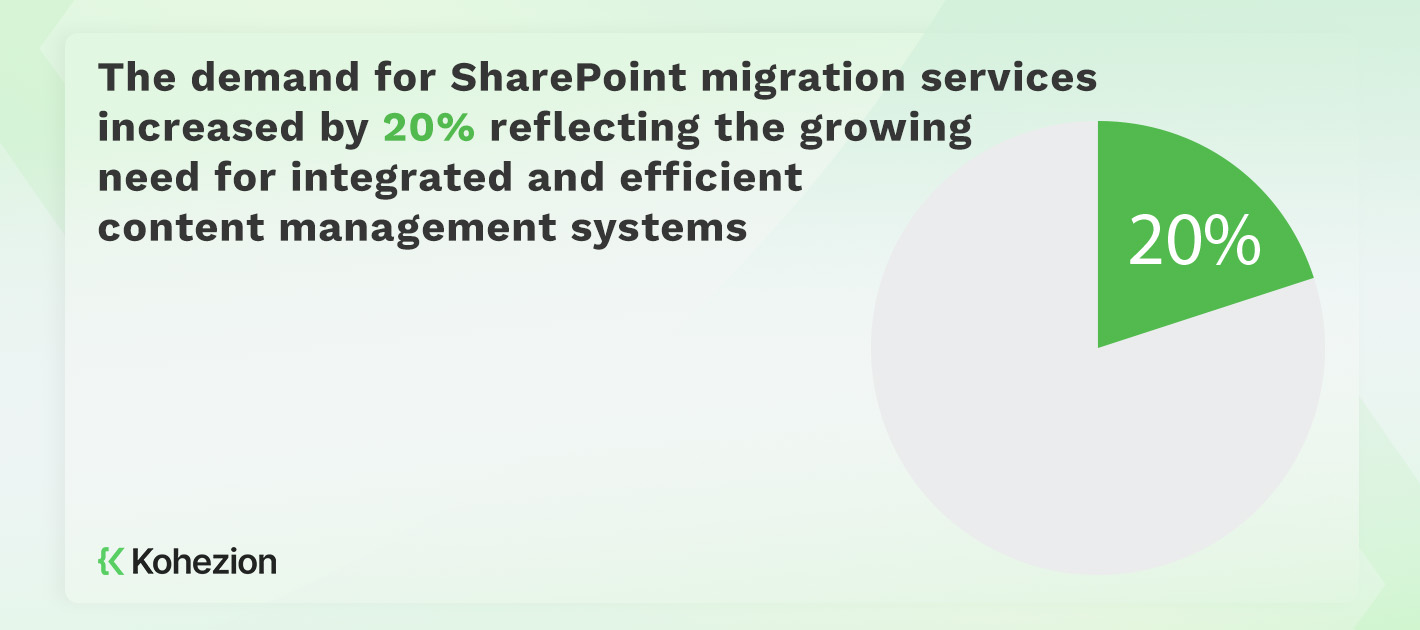
Types of Sharepoint Migration Services
Sharepoint 2010 migration
Moving content from an on-premises SharePoint site to a more recent version, such as SharePoint Online or SharePoint 2019, is known as SharePoint 2010 migration. Take into account elements including workflows, modifications, application downtime, and security concerns. Compatibility problems with newer operating systems or programs from other parties are examples of potential difficulties.
Organizations can compare and choose from a wide range of tools and services to help with the conversion process, including the SharePoint conversion Tool (SPMT), Metalogix Content Matrix, and Quest solutions. These tools facilitate the conversion of workflows from SharePoint Server 2010 out-of-the-box workflows (OOTB) and SharePoint Designer 2010 & 2013 workflows, as well as the movement of material from SharePoint 2010 to subsequent versions.
Sharepoint 2013 migration
The first step is to determine whether third-party integrations or customizations need to be moved. Also, analyze potential data loss hazards and your hardware and software requirements.
The SharePoint Migration Tool, manually exporting and importing data, and using third-party migration services are all common migration techniques.
Sharepoint 2016 migration
SharePoint 2016 to newer versions of the software require careful preparation and execution. It is advised to enlist the aid of certified consultants that can help with content migration, data analysis, and solution implementation. Depending on the requirements, the migration procedure may be carried out on-premises or in the cloud.
Utilize a specialized migration tool that takes both the technical and commercial aspects of the software solutions into account. Reviewing migration-related issues is one of the best practices, as is executing upgrades on particular components. The SharePoint Development Services, SharePoint Online Migration Services, and Tzunami Deployer are suggested tools.
Sharepoint 2019 migration
Although moving to SharePoint 2019 might be a challenging process, with the correct planning and direction, it can go smoothly. Assessing your present SharePoint system is the first step. This will help you find any modifications, workflows, and security issues that may need to be fixed. Next, decide which migration strategy suits your company the best.
Reduce user downtime during the migration process with a two-step migration method and the creation of a migration runbook for each site collection. User testing and training can both benefit from quick-start instructions. Rebuilding or replacing outdated solutions may be a post-migration activity.
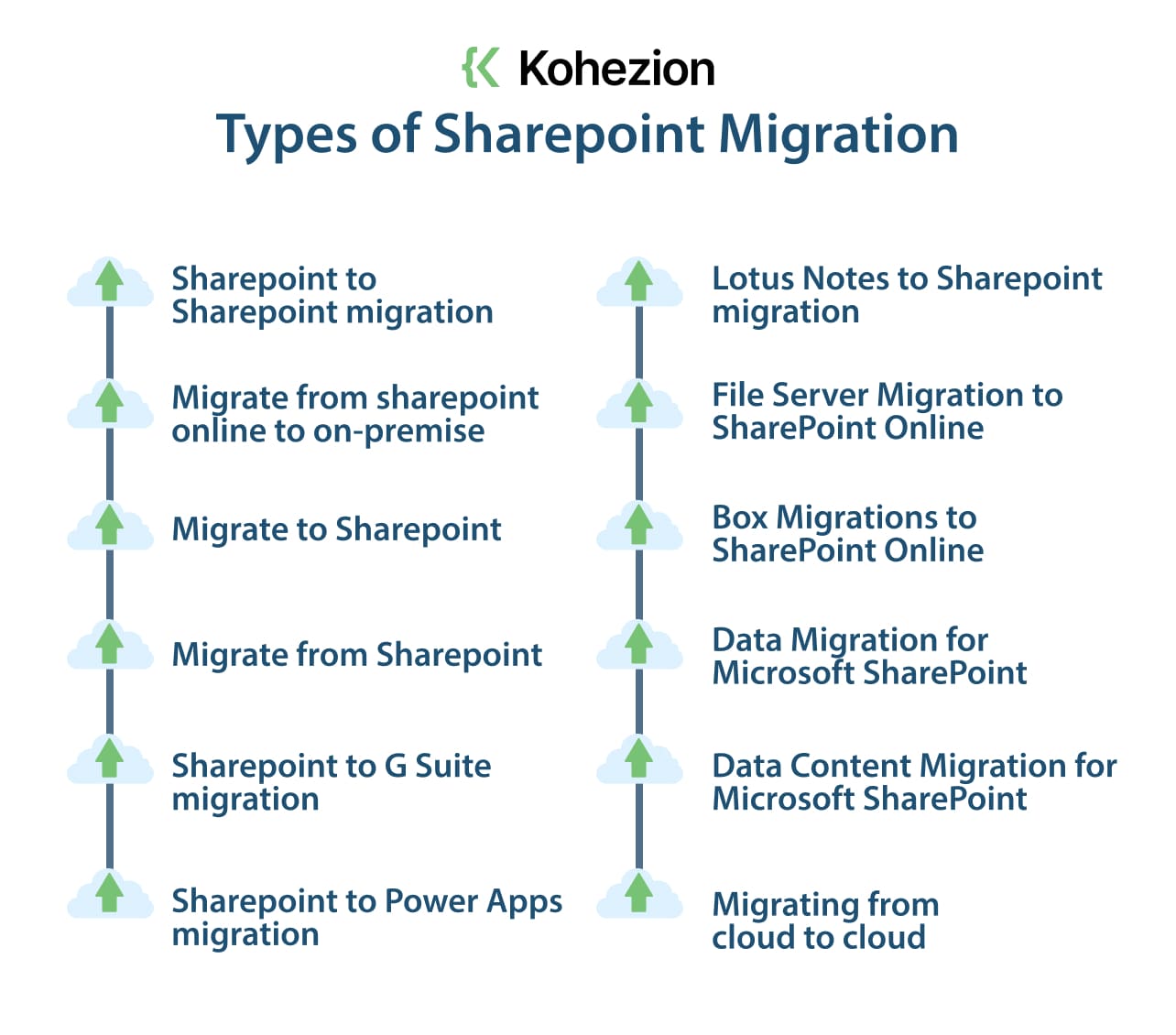
Sharepoint online migration checklist
Pre-Migration Planning:
- Conduct a thorough inventory of your current SharePoint environment and content.
- Analyze the structure of your content, lists, file size, workflows, custom solutions, branding, URL length, etc.
- Decide on the structure of the new site and what items should be moved or left behind.
- Create and document your migration strategy, accurately scoping the effort, cost, and timeline.
- Establish a group of business and IT stakeholders for the project.
- Develop a user adoption plan and provide training for stakeholders.
Migration Process:
- Create and configure the new site(s) in SharePoint and Teams.
- Migrate content using a 2-step migration process to minimize downtime for users.
- Analyze, test, and modernize any legacy solutions identified as critical to moving forward.
- Perform a short delta migration
- Cut over to the new system
- Support users for the first few weeks after go-live.
Post-Migration:
- Engage with SharePoint experts to take full advantage of the new tools and capabilities available in SharePoint Online.
- Enable workplace collaboration and build workflows and forms in Power Platform.
- Manage documents and records in SharePoint.
- Engage users with Intranet portals, increase adoption of Teams and SharePoint, and enable reporting with Power BI.
- Continuously monitor and optimize the SharePoint environment.
| Pre-Migration Planning | Migration Process | Post-Migration |
| Environment & content inventory | New site creation | SharePoint tools |
| Analytics (content structure, lists, file size, workflows,...) | 2-step migration process | Workplace collaboration |
| Site structure | Analyze | Documents and records |
| Strategy document | Testing | Intranet portals |
| User adoption | Short delta migration | Monitor and optimize |
1. Planning
To plan a successful SharePoint online migration, identify the scope of the migration. Then assess the current SharePoint environment to better understand the data, user access, and workflows. Once you have determined the migration approach, create a detailed project plan that includes timelines, budget, and resource allocation. Be sure to test the migration plan through a pilot process to identify and rectify any gaps or issues before starting.
2. Researching
Analyze the current Sharepoint environment, including the location of data, user access, and sensitive data. This will help to identify any potential gaps or issues that need to be addressed beforehand. Also, research the target system and determine what kind of storage space will be required and whether the number of users will increase. Why is this important? It will help you determine whether a custom solution is needed to achieve business goals.
3. Evaluation
Make a careful analysis of your current setup. Analyzing data volume, user permissions, customizations, and third-party integrations are part of this process. Thus, any problems may be found and eliminated to guarantee a smooth relocation procedure. For instance, make sure any custom workflows or apps are compatible with the new environment. In order to accomplish corporate objectives, evaluate the need for storage capacity and whether a unique solution is required.
4. Implementation
To implement the Sharepoint online migration checklist, follow these steps:
- Prepare: Identify high-priority elements, study potential effects of upgrade and migration, and remove obsolete data.
- Pilot: Perform testing for functional equivalency and load tests to identify performance enhancement areas.
- Act: Choose a migration method, finalize user configuration, and securely start implementation of the process.
- Check: Verify the upgrade and review upgraded sites thoroughly.
- Test: Examine solutions at every level.
- Onboarding: Synchronize changes made at the time of execution in the source environment.
5. Testing
Testing ensures a smooth and successful transition. The key steps to follow are:
- Schedule testing for different tasks as soon as they are ready.
- Perform a pilot process to identify any gaps or issues in the current plan and rectify them before starting the actual process.
- Analyze the data from the pilot process and make changes to the plan accordingly.
- Test for functional equivalency and load test to identify performance enhancement areas during the end-to-end migration.
Synchronize changes made at the time of execution in the source environment, and assist in a seamless transition for your users into the destination environment, to help debug frequent problems during testing. Interact with the end users and create messaging that is specific to their requirements.
6. Maintenance
Maintaining your SharePoint Online environment after the migration ensures optimal performance and usability. Here is a step-by-step guide:
- Proactively monitor the platform to ensure SharePoint runs smoothly and is utilized so that you can reap the benefits.
- Ensure that all business processes are working without interruption and guarantee a stable operation of organizational units.
- Keep content safe and preserve the vital functionality of SharePoint solutions.
- Move critical content in the shortest time frames to keep track of issues and maintain a high level of security.
- Add features on the new platform to add value to business processes.
- Move redundant, old data and keep updated content with version history.
- Test the environment after the process to make sure that all the customizations and workflows are performing without any errors.
- Gain visibility on usage and issues and respond to them quickly.
- Utilize Softlanding SharePoint Managed Services to alleviate your IT staff from daily SharePoint administration tasks.
- Utilize the tools and services available such as MS Office System Integration, Electronic Forms, etc.
Conclusion
While SharePoint have served as a valuable resource for many organizations, it now may be considered a legacy system that many organizations move away from.
As you embark on your data management modernization journey, consider the diverse and dynamic world of relational databases. Your future data management success awaits, and with the right tools at your disposal, you'll be ready to tackle whatever comes your way.
A relational database builder like Kohezion offers a more versatile and customizable approach to meet your specific data migration and management requirements.
Start building with a free account
Frequently Asked Questions
Businesses wishing to update their current SharePoint environment or move from non-SharePoint platforms can profit greatly from SharePoint Migration Services. The following are some advantages of SharePoint Migration Services:
- Improved collaboration and communication
- Increased productivity
- Enhanced security
- Latest features and functionality
- Reduced maintenance costs
There are several popular SharePoint migration tools available in the market. These include:
- BitTitan MigrationWhiz: A SaaS solution that enables you to migrate email and data from a wide range of sources and destinations. It provides a centralized interface for streamlining mailbox moves and enterprise-scale migration projects.
- Sharegate: A comprehensive toolkit that provides everything you need for any M365 migration use case. It offers full visibility to your environment, analyzes and fixes it, moves content between sites and tenants, and validates your migration.
- Tzunami Deployer: A flagship migration tool that offers a user-friendly solution to transfer data from less up-to-date Enterprise Content Management Systems into any SharePoint version and Office 365.
- Before examining the Sharepoint architecture, auditing Sharepoint farms, and developing an appropriate migration methodology, the existing digital environment must be assessed first.
- The second phase entails examining Sharepoint components, such as sites and site collections, in terms of their composition and goals, permissions model, level of customization, and other factors.
- Next, inspect the content across each particular solution to define content that is a number-one priority for migration, as well as outdated or irrelevant content.
- The fourth step is developing a thorough plan for migration that will support the steady operation of organizational units that depend on Sharepoint in their everyday operations. Make sure migration is in line with the plan.
- Testing the new environment is the next phase, which controls functional equivalency and identifies potential performance and security issues.
- The sixth step entails training sessions for end users as well as consulting support for Sharepoint administrators to describe management requirements pertinent to a fresh deployment.
- Post-migration support is intended to assist organizations in fixing technical issues and overcoming user adoption pitfalls.
- The final step is the evolution of a Sharepoint solution to relieve the IT infrastructure while reducing maintenance and support costs at the same time.
There are different types of SharePoint migration services offered based on the complexity of the project, including:
- Simple migrations: These migrations involve transferring files and data across different SharePoint environments. They are simple and may be finished in a couple of days.
- Complex migrations: These migrations require transferring data from several sources, including file sharing, other apps, and SharePoint on-premises. They can take weeks or months to complete and need a more intricate migration plan.
- Hybrid migrations: These migrations involve transferring data from SharePoint systems that are hosted on-premises and in the cloud. They can take more time to accomplish and call for knowledge of both areas.
- Custom migrations: These migrations entail transferring data from non-SharePoint platforms like Google Drive and Lotus Notes. They can take a long time to finish and necessitate a tailored migration plan.
The process of migrating SharePoint data and apps from a company's local servers to another on-premises server is known as on-premises migration. In contrast, cloud-based migration entails migrating SharePoint data and apps to a Microsoft hosted and managed cloud-based server like SharePoint Online.
The degree of control and responsibility varies greatly between on-premises versus cloud-based SharePoint migration. With on-premises migration, the company retains full control over the server infrastructure but is also accountable for its management and upkeep. With cloud-based migration, the company has less control over the server infrastructure because it depends on the cloud provider to operate and maintain it.
The first step in ensuring the security of your existing data is to move it properly. Prior to migration, remove redundant and outdated data. Select the migration strategy that best suits you. Install the appropriate hardware to make sure that your new environment is quick and prepared for the long term.
Your Microsoft personnel should receive training on the new system, and with clearly defined policies, roles, and duties, you can assure the security of your data. Collaborate with your team to design and create branding that reflects the character of your brand.
Data loss, prolonged downtime, loss of customizations, and problems with user adoption are among the concerns. If data is not adequately backed up or the migration procedure is not correctly finished, data loss may occur.
Business activities may be disrupted by prolonged downtime. If bespoke solutions are not correctly moved, customizations may be lost. If users are not properly trained on the new SharePoint environment, user adoption problems may occur.
